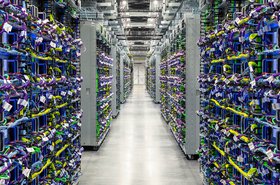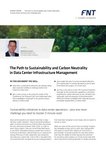It seems that any technology is controversial, and teasing out the costs and benefits of each rapidly becomes a rabbit hole, with no definitive answers at the bottom.
Fossil fuels, coal and gas, are obvious bad guys. We can all agree that they cause global warming, and the best advice is to keep them in the ground, and stop burning them as rapidly as we can.
But that quickly becomes more complex. We are addicted to our fossil fix, and large parts of today’s society cannot currently operate without fossil fuels. Transport, heating, and heavy industry all need fuel that is transportable and/or has a high energy density.
We can try to reduce our needs in these areas. Insulate homes and buildings, stop flying, and adopt circular practices with the hardware we buy.
Flying is a particularly strong action. We all have a personal target, to achieve a carbon footprint “ration” of two tonnes (there’s more complexity underneath, but that’s the average needed across the world for net-zero). We should get to it as quickly as possible, and certainly by 2025.
Reasonable estimates suggest that flying in a passenger plane emits 250g of carbon dioxide per person per hour. So if you spend eight hours or more on a plane, you have spent your entire target budget for the year in the air. And if you spend multiple times that, you need to think again.
The single best action you can do for the planet is the following: don’t fly if you can avoid it. One day there may be low-carbon aviation fuels, but they won’t be around in time to help before the crisis.
Don’t be a passive passenger. Don’t go along for the ride. You can make a choice.
Do the same with the circular economy. Look for reconditioned servers. Install them in a renovated building. You’ll save on the energy and materials used in making those physical objects.
Energy shift
But the world still needs heating and transportation… we even need a certain amount of collective air miles. The goal is to do all this with low-carbon energy and materials.
The big picture is that sectors like heating and transport must switch to electricity, and electricity itself must switch to renewable sources.
The trouble is, even if these things can be done by electricity, we don’t have enough low-carbon electricity on our grids. Our electricity supply is still closely tied to fossil fuels. Coal, oil, and gas provide the “despatchable” power that can meet surges in demand, and in most countries, fossil sources also provide a lot of the day-to-day baseline power on the grid.
That means that all industries should show restraint. Just as we should use less fossil fuel by flying less, we should also use as little electricity as possible. That leaves more renewable power for the hard-to-decarbonize sectors.
For this reason alone we should seriously question a lot of things. The predicted massive boom in AI processing runs completely counter to the data center industry’s professed environmental goals.
AI: Think before you grow
Synergy has predicted that the AI boom could result in hyperscale companies building triple the amount of data center IT capacity they are using over the next six years. That is three times the amount that was already straining the capacity of the data center construction industry and is causing concern to national governments.
One might dismiss analyst reports that hype up the latest trends, but Alex de Vries of Digiconomist has calculated from the ground up what the energy demand of AI is likely to be. Simply based on how many DGX chips the market leader in GPUs, Nvidia, plans to turn out, de Vries calculated that AI is likely to add 50 percent to the energy used by data centers worldwide.
de Vries has a good track record. He got the cryptocurrency boom right, tracking the energy wasted by Bitcoin and the like. This time round he has given us a solid figure on a major downside of AI.
If these AI really triples the amount of hyperscale data center capacity in the world, and boosts the energy consumed in those facilities, this will have a real environmental impact that should be counted alongside the benefits.
AQ Compute tells me it is building for AI processing in Norway and Madrid, and that its parent company can match all the power they need with renewable sources. But, even so, the world can only bring on new green power at a certain rate, and that power is needed by many sectors.
This kind of expansion can’t be done without increasing emissions, or hindering other sectors’ decarbonization. It shouldn’t even be contemplated without considering whether it is actually useful.
I’ve said many times that to save the planet, we should think before we fly.
We should also think before we build AI-centric data centers.





